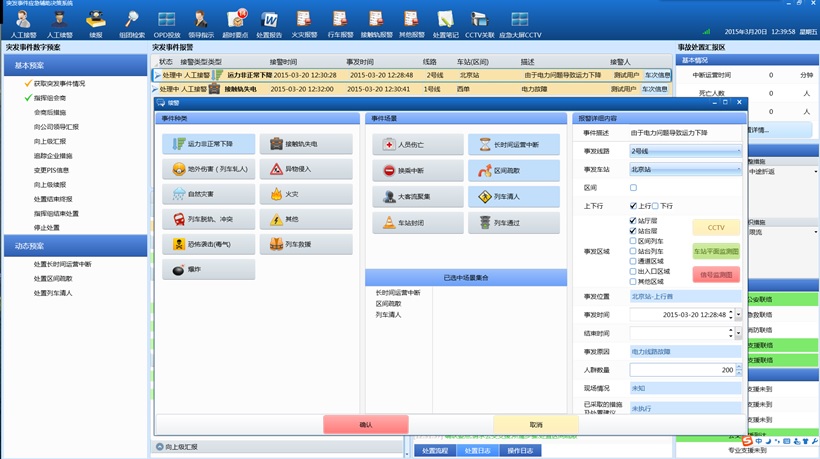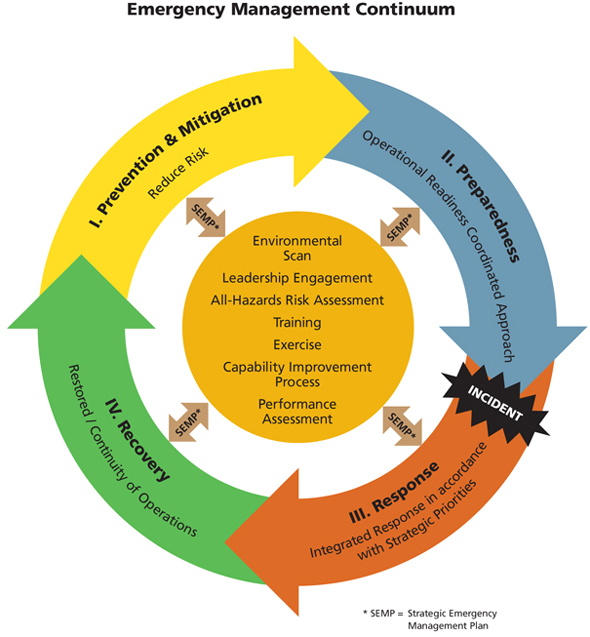Emergency Management with Scenario Planning & Training
Training environments are customised to our customer needs, and bespoke scenarios are created to create real-life conditions which are important in developing effective procedures to mitigate disasters. It allows project leaders to plan ahead as these scenarios are able to gauge elements such as response times and overall performance of individuals and groups in an emergency.

Emergency Management Concept
The Emergency Management Continuum is depicted in a wheel diagram where all four risk-based functions of emergency management are interconnected and interdependent in a system from prevention and mitigation to preparedness, response, and recovery. This system shows that an effective emergency management system ensures that prevention and preparedness efforts are in place to respond to and recover from an incident.
In the center of the wheel are the main elements that influence the development of a Strategic Emergency Management Plan (SEMP). Those elements are as follows: Environmental Scan, Leadership Engagement, All-Hazards Risk Assessment, Training, Exercise, Capability Improvement Process, and Performance Assessment
It highlights the four interdependent risk-based functions of EM: prevention and mitigation of, preparedness for, response to, and recovery from emergencies. These functions can be undertaken sequentially or concurrently, and they are not independent of each other.
The inner circle includes all of the elements that influence the development of the SEMP, such as:
- updates of environmental scans;
- ongoing/regular all-hazards risk assessments;
- engaged leadership;
- regular training;
- regular exercises; and
- a Capability Improvement Process (CAIP)—the approach to the collection and analysis of response for exercises and real events.
The figure also places the SEMP in the continuum as a living document that is continuously improved and adjusted, for instance, as lessons learned through responses/exercises or a changing risk environment are integrated.
The SEMP should ideally be reviewed on a cyclical basis as part of a federal government institution's planning cycle, as presented in Figure 2 below. Further guidance on the optimal planning cycle is provided in Section Four.
- Scenario training ensures response readiness and an effective management of emergencies.
- Optimise response times, minimise loss and damage, and maintain operational capabilities.
- Ensure rapid recovery, restoration of built environment and return to normal operation.

